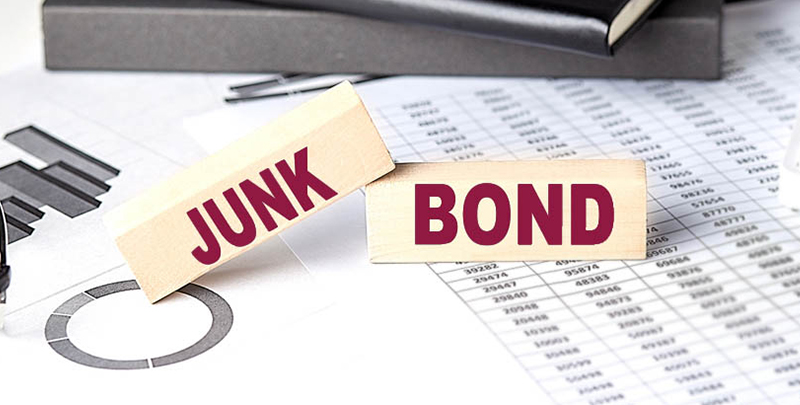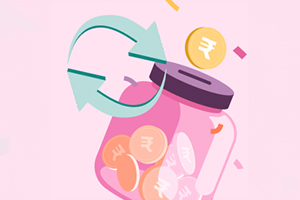In the diverse landscape of financial instruments, junk bonds stand out as fascinating and controversial. These high-yield debt securities offer attractive returns but are accompanied by significant risks that require careful consideration. Junk bonds comprise a distinct segment of the bond market that can be lucrative for informed investors but potentially disastrous for those unfamiliar with them. As economic conditions fluctuate, understanding the nature, benefits, and pitfalls of these investment vehicles becomes increasingly important.
What is a junk bond?
What are junk bonds? At their core, junk bonds are debt securities issued by companies with poor credit ratings. Unlike investment-grade bonds, which financially stable organisations issue, junk bonds are defined as bonds issued by companies that are financially struggling or unproven, carrying a higher risk of default than most corporate or government bonds. These companies issue bonds at higher interest rates to attract investors willing to take on additional risk.
The junk bonds meaning also extends to what financial professionals call "high-yield bonds," since the higher yield is necessary to offset the elevated risk of default. From a technical perspective, these bonds function similarly to regular corporate bonds – both represent debt issued by firms with promises to pay interest and return the principal at maturity. The key difference lies in the issuer's credit quality.
Typically, issuers include capital-intensive companies with high debt ratios or young businesses yet to establish strong credit ratings. When you purchase a junk bond, you're essentially lending money to the issuer in exchange for periodic interest payments. However, the higher default risk means these interest payments may not be disbursed as scheduled.
How are junk bonds rated?
Credit rating agencies play a crucial role in determining which bonds fall into the category of junk bonds. The three major rating agencies – Standard & Poor's, Moody's, and Fitch – evaluate bonds based on the issuer's financial health and ability to meet payment obligations.
Standard & Poor's investment-grade ratings include:
- AAA: Excellent
- AA: Very good
- A: Good
- BBB: Adequate
Once a bond's rating drops to BB or lower, it enters junk bond territory. Some speculative ratings include:
- BB: Less vulnerable to nonpayment but faces significant uncertainties
- B: More vulnerable to nonpayment
- CCC: Currently vulnerable to nonpayment
- C: Highly vulnerable to nonpayment
- D: In default
In India, rating agencies such as CRISIL, CARE, and ICRA employ comparable systems. The lowest rating assigned by CRISIL and CARE is "D," indicating default. In contrast, ICRA's equivalent lowest rating is also "D." Bonds rated below BBB- are considered non-investment-grade or "junk" bonds.
These ratings directly impact bond yields—the lower the rating, the higher the yield must be to attract investors. Junk bonds typically offer yields higher than investment-grade alternatives, reflecting their elevated risk profile. Bonds rated below BBB- are considered non-investment-grade or "junk" bonds.
Advantages and disadvantages of junk bonds
Junk bonds offer several potential advantages for investors willing to navigate their complexities:
- Higher yields: These bonds typically pay interest rates higher than those of investment-grade bonds, making them attractive to income-focused investors.
- Price appreciation potential: If the issuing company's financial situation improves, junk bonds can experience significant price appreciation.
- Upside opportunity: Since many junk bonds are issued with 10-year terms, they have time to perform better if the issuer's credit rating improves before maturity.
- Priority in liquidation: Investors in junk bonds receive precedence over stockholders during liquidation, providing them with an advantage in recovering at least part of their investment in the event of default.
However, these advantages come with substantial disadvantages:
- Higher default risk: The fundamental drawback of junk bonds is their elevated risk of default compared to better-rated bonds.
- Price volatility: Junk bonds are subject to significant price fluctuations due to uncertainty about the issuer's financial performance.
- Investment loss potential: If a company defaults, bondholders risk losing their entire investment.
- Reduced liquidity: These bonds typically have lower trading volumes, resulting in less liquidity.
- Market sensitivity: When interest rates on investment-grade bonds increase, junk bonds become less attractive.
What affects junk bonds?
Several factors influence the performance and appeal of junk bonds:
- Interest rate environment: When interest rates rise, the relative attractiveness of existing junk bonds typically decreases. Conversely, falling rates can make high-yield bonds more appealing.
- Economic conditions: The overall health of the economy has a significant impact on junk bonds. During economic expansions, default rates typically decrease, making these bonds less risky.
- Industry-specific factors: Certain industries may face unique challenges that affect the performance of junk bonds issued by companies within those sectors.
- Issuer's financial health: Improvements or deteriorations in an issuer's financial condition directly affect the value and risk profile of their bonds.
- Market sentiment:Investor risk appetite influences demand for high-yield bonds. When investors are risk-averse, they typically avoid junk bonds, reducing demand and prices.
The recent high-yield bond market
In India, the junk bonds market has evolved more gradually. Initially underdeveloped, it has grown as companies with lower credit ratings sought alternative funding sources. The Securities and Exchange Board of India (SEBI) maintains strict oversight of this market, imposing rigorous disclosure requirements to protect investors.
The COVID-19 pandemic created significant volatility in the junk bond market worldwide. Initial panic selling gave way to opportunities as central banks implemented supportive monetary policies. Companies rushed to issue new debt to strengthen balance sheets during the uncertainty, leading to record issuance volumes.
Today's junk bonds market continues to serve as an essential indicator of broader market sentiment. Increased buying interest typically signals economic optimism, while selling pressure often indicates growing risk aversion among investors.
Conclusion
Junk bonds represent a unique investment opportunity for those willing to accept higher risk in exchange for potentially greater returns. Understanding the junk bonds' definition and characteristics is essential for making informed investment decisions. While they offer attractive yields and potential price appreciation, the higher default risk and market sensitivity demand careful consideration.
Education and due diligence are paramount for Indian investors interested in exploring junk bonds and their place in a diversified portfolio. Junk bonds encompass opportunity and risk, making them suitable for only certain types of investors and portfolio strategies.
Also Read: Things to know before investing in Floating Rate Savings Bonds
FAQs
Are junk bonds worth buying?
Junk bonds may be a worthwhile consideration for investors with a higher risk tolerance who seek enhanced yields. They can be appropriate as part of a diversified portfolio, particularly during stable economic periods when default risks are lower. However, they're generally not suitable for conservative investors.
Who invests in junk bonds?
Typical investors in junk bonds include:
- Institutional investors like pension funds, insurance companies, and hedge funds with sophisticated risk management capabilities
- High-net-worth individuals with higher risk tolerance.
- Mutual funds and exchange-traded funds specialising in high-yield debt.
- Risk-tolerant individual investors seeking diversification and higher income potential.
Most individual investors access junk bonds through mutual funds or exchange-traded funds.
What is the return rate on junk bonds?
Return rates on junk bonds are typically higher than investment-grade bonds. Returns fluctuate based on economic conditions, interest rate environments, and the issuer's financial health. During favourable periods, returns may exceed the higher yield due to price appreciation, while during downturns, losses may occur despite the attractive coupon rates.
How to find junk bonds?
Investors can find junk bonds through several channels:
- Bond mutual funds and exchange-traded funds specialising in high-yield debt.
- Online brokerage platforms that offer access to bond markets.
- Financial advisors who can recommend specific high-yield bond investments.
- Bond indices that track high-yield corporate debt.
- Direct offerings from investment banks.
For most individual investors, high-yield bond funds offer the most accessible and diversified approach to investing in junk bonds.
Disclaimer: This article is for information purpose only. The views expressed in this article are personal and do not necessarily constitute the views of Axis Bank Ltd. and its employees. Axis Bank Ltd. and/or the author shall not be responsible for any direct / indirect loss or liability incurred by the reader for taking any financial decisions based on the contents and information. Please consult your financial advisor before making any financial decision.







